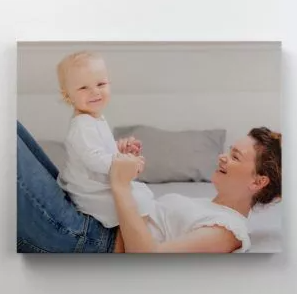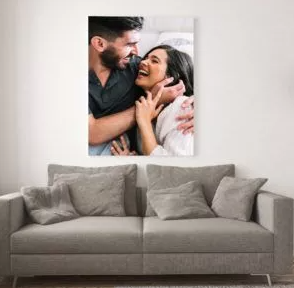Before Buying Photos on Canvas Prints Online
Before, getting a representation of yourself by recruiting a craftsman was something that main the select classes could manage - it was exorbitant and tedious simultaneously, not referencing the extended periods spent seating before a painter without having the option to move. These days you can take many computerized pictures, select which one you like the most, the position, the variety, the foundation, even an impact, store it in your portable or advanced camera and request a material print from it on the web. Very simple, quick and reasonable, yet there are a few elements to consider while requesting these sort of prints.
The following is some foundation on methods utilized while printing Photos on canvas: The most famous sort of material prints is called 'inkjet craftsmanship' and includes utilizing huge arrangement inkjet printers that utilization color chronicled inks for printing the image on material materials. The goal of the subsequent prints can be noteworthy, the most extreme being 2880x1440DPI (spots per inch) at the hour of composing this article. The shade is a particular sort of ink that guarantees both stable variety range portrayal and obstruction for UV beams and other outer elements like residue and dampness.
Cotton or Poly-Cotton Material?
The material might be either unadulterated cotton or a blend among cotton and polyester, most material providers state on their sites which kind of material they use. For the most part the unadulterated cotton material prints are more costly. The unadulterated cotton material gives the print a more regular look, the surface shows up nearer to the customary work of art, though the poly-cotton blend gives the image more plastic or cloth look appearance. When the image is printed, the material is stained and extended on a cot outline, this is a particular sort of wooden lumber outline that has wedges in each corner which permits you to re-strain ( re-stretch) the material at whenever by pushing these wedges towards the casing's corners. My recommendation is that you shouldn't buy a material print that is only sticked on a wooden board, having it appropriately outlined the conventional way that includes extending on the wedged lumber outline guarantees strength of the print, as the material might seem a piece free after some time and you want those wedges to have the option to re-stretch it once more.
What photographs are reasonable for imprinting on material?
Photograph Goal: The nature of the material print is straightforwardly corresponding with the goal of your photograph. For the most part you shouldn't present a photograph that has under 250KB, as it might show up 'pixelated', even on a 10x10cm print. While picking a web-based material shop ensure that their site has a photograph really looking at instrument, when you transfer your photograph the device lets you know whether the goal of your photograph is reasonable for the material size you chose. In the event that you know the components of your photograph (most Macintosh and Windows frameworks show this data in the photograph properties box) you can decide the subsequent print goal by separating the quantity of pixels your photograph has by the quantity of inches the material print size chose by you has. For instance in the event that your photograph has 5000 pixels on a level plane, and you need a print that has a width of 50 centimeters, the subsequent print will have around 5000pixels/20inches=250DPI flat goal. A similar computation applies to vertical goal. A print that has no less than 250DPI, on material, is a genuinely gorgeous print. The computation above addresses the genuine goal, but the expert printers utilizing different programming can 'enreach' photographs that have lower goal, there are a few calculations that really broaden a photograph and increment the goal simultaneously by misleadingly making pixels, the subsequent print anyway may introduce designs like minor squares or circles.
Editing or Resizing?
A decent internet based material print shop ought to introduce you the design of the subsequent material before you purchase. Since there are a few perspective proportions that photographs have (4:3, 3:2 for instance - the viewpoint proportion is number of pixels on a level plane separated by number of pixels in an upward direction), your photograph might require some editing and without seeing what the fashioner will trim from your photograph you clearly risk getting the print that you don't need. Assuming your photograph has a viewpoint proportion of 3:2 and you select for instance a 40x30cm material, the photograph will be either trimmed or resized to that aspect. As referenced previously, when you request the site ought to give you the control and permit you to trim or resize the photograph the manner in which you believe that it should see on the material.
For more details, visit us :



Comments
Post a Comment